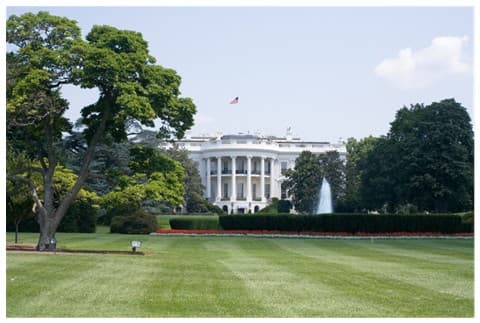Review the Making Home Affordable Programs
- Multiple programs are part of Making Home Affordable
- HARP is a Making Home Affordable program aimed at underwater homeowners.
- HAMP offers payment relief if you're having trouble making your payment.
Can HARP, HAMP, or HAFA Help You Save Money?
Millions of Americans have been struggling with their mortgages. Some are having problems just making their required payments each month. Others are making their payments on time, but their house is worth a lot less than they owe on it.
Making Homes Affordable (MHA) is official government program that aims to help over 10 million homeowners. Under President Obama's initiative, the Department of the Treasury and the Department of Housing and Urban Development (HUD) initiated a variety of programs to help distressed homeowners. Making Home Affordable programs focus on:
- Modifying existing first and second mortgages
- Refinancing underwater homes
- Helping homeowners avoid foreclosure and smoothly transition out of their current homes
Keeping with standard government practices, an alphabet soup of programs were released to address the different problems:
- HARP
- HAMP
- HAFA
HARP - For Underwater Homeowners
The Home Affordable Refinance Program (HARP) was introduced in 2009. HARP mortgages are designed to help homeowners who owe more on their home than it is worth refinance and take advantage of the low interest rates available. Various problems prevented HARP from helping as many people as it was designed to help, so, in late 2011, President Obama rolled out an expanded HARP 2.0 mortgage program.
Where HARP 1.0 was available only for homeowners with an LTV of less than 125%, HARP 2.0 removed all LTV restrictions. In theory, no matter how underwater you are, you can get a HARP loan if you meet the other eligibility requirements. In practice, however, lenders have imposed their own LTV (loan-to-value) restrictions, with many not processing loan applications for borrowers with LTVs greater than 125% or 150%. The main lender overlays for HARP loans are related to credit scores and debt-to-income ratio requirements.
Still, if you meet the following basic HARP 2.0 lending requirements, it is worth your time to see if you can qualify:
- Your loan is owned or guaranteed by Fannie Mae or Freddie Mac.
- You have no late mortgage payments in the past six months and not more than one in the past 12 months.
Quick tip
get a harp quote now. take advantage of today's historically low interest rates, if at all possible.
HAMP - Struggling to Make Your Mortgage Payment
The Home Affordable Modification Program (HAMP) was designed to reduce the size of the monthly payment for millions of homeowners struggling to keep up with their payments.
To qualify for a HAMP mortgage modification, you need to meet the following four requirements
- The mortgage must be for a home you live in as your primary residence
- Your loan balance is not more than $729,500
- Your monthly principal and interest payment on your mortgage is more than 31% of your gross monthly income
- You can't afford to keep making your mortgage payments
It is up to your lender to determine if you are eligible for a Making Home Affordable loan modification. You can find more information about HAMP eligibility at HUD's MakingHomeAffordable.gov Web site and a detailed overview of HAMP in this Bills.com HAMP article.
Modifications are being made to enhance HAMP. They are expected to be announced no later than June 2012. Bills.com will report on the HAMP changes once they are finalized and released.
HAFA- Avoiding Foreclosure
The Home Affordable Foreclosure Alternatives (HAFA) program is designed to help distressed borrowers avoid the negative financial and credit consequences of foreclosure. Through a program of financial incentives to borrowers, lenders, and mortgage services, HAFA aims to put in place one of two foreclosure alternatives: a short sale or a deed-in-lieu of foreclosure. HAFA aims to streamline and standardize the process, making it easier for all concerned parties.
HAFA works in concert with HAMP. In order to be eligible for HAFA, your have to meet the HAMP eligibility requirements. If you do, then your lender must review your HAFA eligibility if you:
- Have been turned down for a HAMP trial period plan
- Did not complete a HAMP trial period plan
- Were denied a permanent HAMP modification
- Are delinquent on your HAMP modification
- Request a short sale or deed-in-lieu of foreclosure
As a first step, seek out a free HAFA consultation with an HUD approved housing counselor. The counselor will answer your questions and help you figure out if you can take advantage of the HAFA program.
Additional Making Home Affordable Programs
There are some other programs that are part of MHA that apply to fewer people, but could still be quite helpful for the right borrower.
These programs include:
- A Second Lien Modification Program- Designed for borrowers who modified their first mortgages through HAMP and have a second mortgage or HELOC that is causing financial problems.
- FHA and VA Loan Modifications- There are specialized modification programs available to borrowers with FHA or VA loans.
- Home Affordable Unemployment Program- Some unemployed borrowers may be eligible to suspend their monthly payments for up to 12 months.
A complete list of all the Making Homes Affordable programs is viewable at the HUD Web site.
